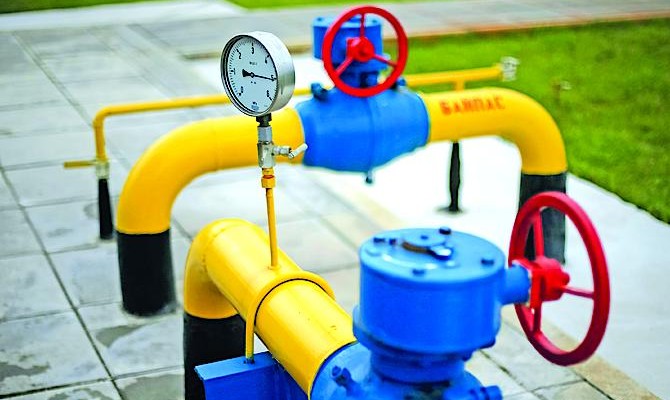Economy
projectsLay a pipeline. Naftogaz is holding talks on the construction of a pipeline from Poland

The national joint stock company Naftogaz of Ukraine is in talks with potential suppliers of liquefied natural gas (LNG) from the U.S. to Europe on the construction of a gas pipeline to Poland. The project would allow for loading Ukrainian underground gas storage facilities (UGSF) with American fuel.
New project
Construction of the pipeline will allow pumping gas that Poland will receive after construction of an LNG terminal in Swinoujscie, informed Vice Chairman of the Board of Naftogaz Oleksandr Todiychuk. The capacity of the Ukrainian-Polish pipeline could amount to 7-10 bn cu m per year and will allow for including the Ukrainian UGSF, which at the moment have free storage capacities of 12 bn cu m of gas, in the North-South gas corridor that will link the LNG terminal in Swinoujscie with the same terminal on the Croatian island Krk.
The North-South gas corridor will go through Poland, Slovakia, Hungary and Croatia allowing the free transport of gas through Central and Eastern Europe. Countries that are parts of the North-South corridor are building interconnections, which connect pipelines between their gas transport systems. The Ukraine-Poland pipeline could become one such interconnector.
Activation of the process
At the moment, gas export from the U.S. is strictly limited. It can only be supplied to countries that the U.S. has free trade agreements with. “There are not many such countries in the world. The EU has been unable to sign such an agreement with the U.S. for many years,” explained co-chair of the Energy Strategy Fund Dmytro Marunych. He pointed out, however, that at the moment Washington is simplifying the issuing of licenses for gas export. This should open the gates for supplies of American LNG to Europe.
Naftogaz press service refused to provide the details of the talks with U.S. companies, but President of the Strategy-XXI Center for Global Studies Mykhailo Honchar noted that the representatives of the U.S. company Cheniere Energy Partners visited Ukraine back in 2012. “They explored the possibility of expanding the market for their LGN,” he said.
Who will pay for the pipeline?
Todiychuk did not announce the cost of the interconnector’s construction, while the Naftogaz press service refused to provide the details of the project. Honchar estimates that the project may cost around US $500 mn, while earlier experts estimated it at US $800 mn.
Experts disagree on the benefits of the construction of an interconnector with Poland for Ukraine. Marunych believes that it will not be easy to find investments for the project and its economic expediency is rather questionable. He explained that the LNG terminal in Poland will have a capacity to receive 10 bn cu m of gas a year, while Poland itself consumes around 15 mn cu m of gas a year. “They are building the terminal for themselves and not for Ukraine. The maximum we will get is half of the gas from the LNG terminal,” says Marunych.
At that, the contracts for gas supplies to Poland from Qatar envisage the price of gas at US $385 per 1,000 cu m, which casts doubt on the economic benefit of the project for pumping gas to Ukraine, he added. Meanwhile, Honchar believes that the Ukrainian-Polish interconnector is needed as an alternative to the Slovakia and Hungary routes of loading Ukraine’s UGSF. He gave an example of Hungary, which on energy issues is leaning more towards the Russian-oriented position. “You cannot hope for just one route. Poland is our reliable partner and we need to ‘cover our bases’,” he said.
As for the LNG price, which Ukraine will get from Poland, Honchar explains the growth of prices for LNG by the increase in its consumption by Japan as a result of the shutdown of the nuclear power plant after the disaster at Fukushima. “Japan decided to gradually put the NPP back into operation and will therefore start importing less gas. This means prices will drop,” he said.
Experts also noted that regardless of the volumes of Russian gas transit through Ukraine, the UGSF will play the role of a gas accumulator and become a new business element of gas sales of Europe on the spot market. The market is quite volatile and the Ukrainian UGSF is most suitable for operating on this market.






 of the agreement of syndication with Financial Times Limited are strictly prohibited. Use of materials which refers to France-Presse, Reuters, Interfax-Ukraine, Ukrainian News, UNIAN agencies is strictly prohibited. Materials marked
of the agreement of syndication with Financial Times Limited are strictly prohibited. Use of materials which refers to France-Presse, Reuters, Interfax-Ukraine, Ukrainian News, UNIAN agencies is strictly prohibited. Materials marked  are published as advertisements.
are published as advertisements.